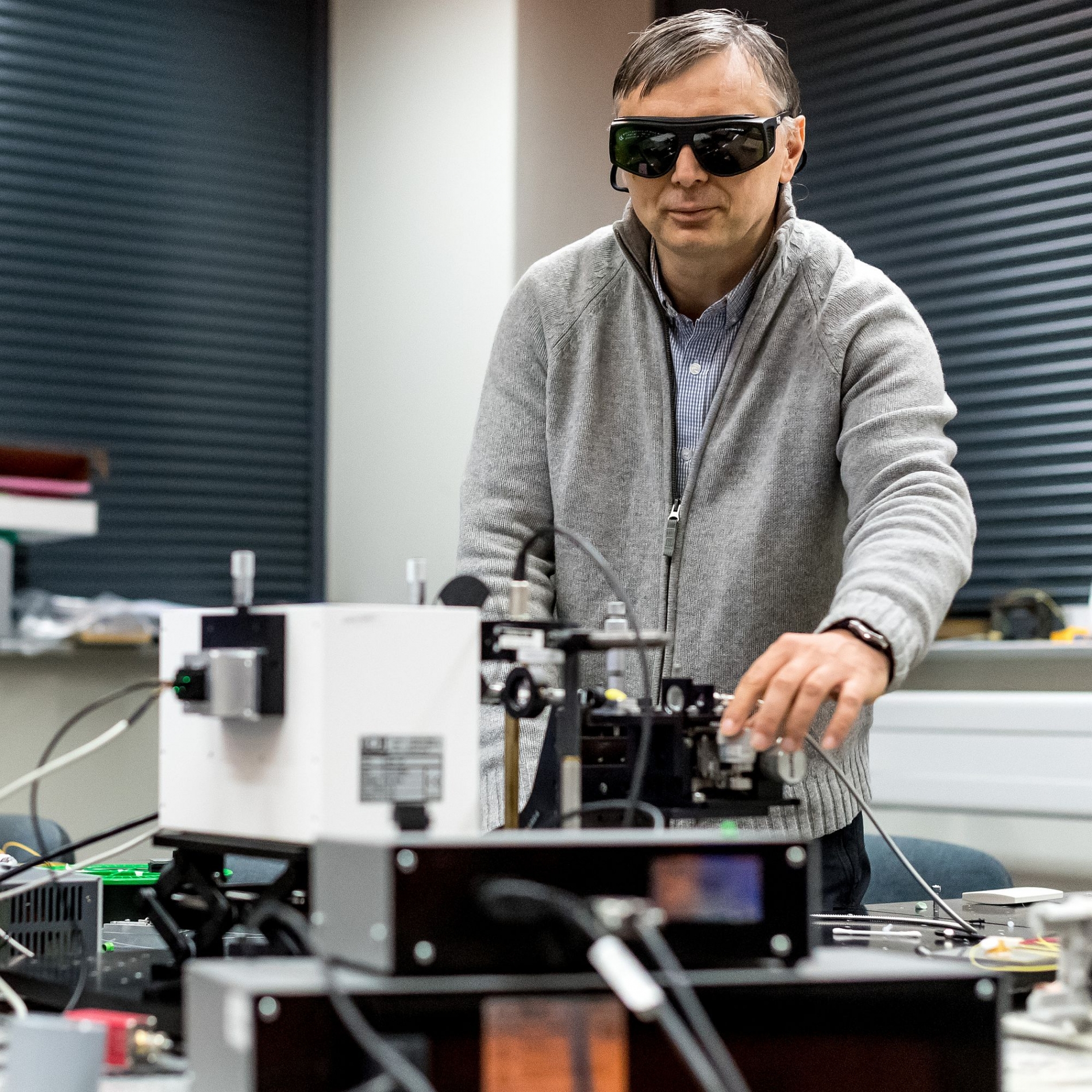YOUR BROWSER IS OUT-OF-DATE.
We have detected that you are using an outdated browser. Our service may not work properly for you. We recommend upgrading or switching to another browser.
Date: 21.01.2019 Category: general news, science/research/innovation
A research project on new, mid-infrared range light sources is on the point of completion at Wrocław University of Science and Technology. It involves a very advanced technology, which is being tested by few scientific centres in the world.
The research conducted at WUST is headed by Professor Sławomir Sujecki, PhD, DSc, Eng, who has also worked for many years at the University of Nottingham. The project is being carried out under the “Polonez” grant from the National Centre for Science and co-financed by the European Commission (Horizon 2020 framework programme).
 - The main advantages of new, mid-infrared range light sources are their low price, simple construction, high reliability, and low-temperature operation - explains Professor Sujecki. - Mid-infrared radiation is widely used in medicine. It can increase the availability of many diagnostic methods for patients, including those for the diagnosis and classification of cancer cells. It’s also a simple and effective method of detecting gases, e.g. in mines - he adds.
- The main advantages of new, mid-infrared range light sources are their low price, simple construction, high reliability, and low-temperature operation - explains Professor Sujecki. - Mid-infrared radiation is widely used in medicine. It can increase the availability of many diagnostic methods for patients, including those for the diagnosis and classification of cancer cells. It’s also a simple and effective method of detecting gases, e.g. in mines - he adds.
The project resulted in the development of infrared light sources that operate in the wavelength range from 2,000 to 6,000 nanometres, invisible to the human eye. Any object whose temperature is greater than absolute zero emits electromagnetic radiation. In the case of objects whose temperature is close to room temperature, a large proportion of the radiation emitted is in the wavelength range of mid-infrared radiation. The presence of such electromagnetic radiation can be recorded using specially designed detectors.
One of the possible applications of this technology is the detection of greenhouse gases such as carbon dioxide. The bonds in the CO2 molecule are not at rest, they vibrate. The resonance frequency of these vibrations is equivalent to that of an approximately 4.3-micrometre long electromagnetic wave. If such a vibrating molecule is illuminated by radiation of an appropriate wavelength, it starts absorbing light very intensively. When the CO2 concentration changes, the intensity of the absorption process will also change, and the detector shows a change in light intensity. The mechanism is, therefore, a simple one. It only requires a light beam of an appropriate wavelength and its detection - explains Professor Sławomir Sujecki.
The technology now being tested at Wrocław University of Science and Technology uses modern materials - so-called chalcogenide glasses, whose development is the responsibility of the team from the University of Nottingham.
Professor Sujecki emphasises that this kind of research into mid-infrared range light sources isn’t yet very popular in the world. However, he believes that it’s a matter of time, because this technology may be a cheaper and more efficient alternative to the currently used ones. Although our research is basic, there is a huge commercial potential in it - says Professor Sławomir Sujecki.
The RoMISES (Robust Mid Infrared Spontaneous Emission Sources with Tailored Output Spectrum Shape) project started in 2017. It was carried out at the Mid Infrared Laboratory of WUST’s Department of Telecommunication and Teleinformatics, run by Professor Tadeusz Więckowski. Professor Elżbieta Bereś-Pawlik and Łukasz Sójka, PhD, Eng also participated in the research. The cost of the project was almost 1 million PLN. The results have already been published in scientific journals, such as "Journal of Luminescence", with more articles awaiting publication.
Our site uses cookies. By continuing to browse the site you agree to our use of cookies in accordance with current browser settings. You can change at any time.